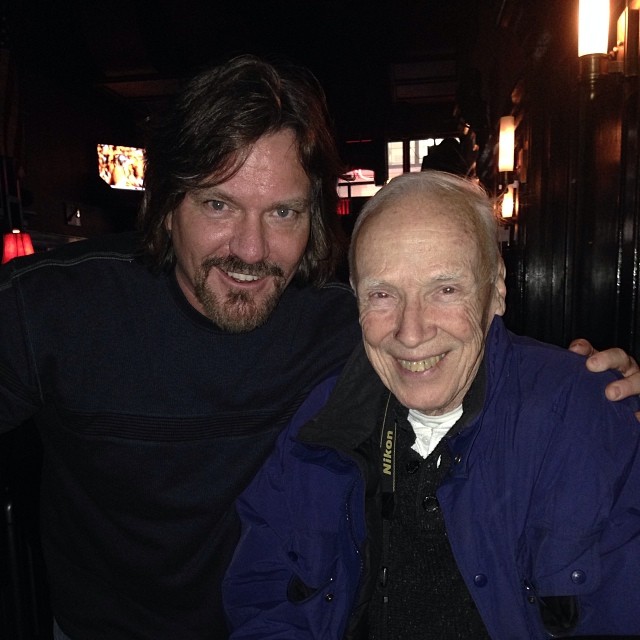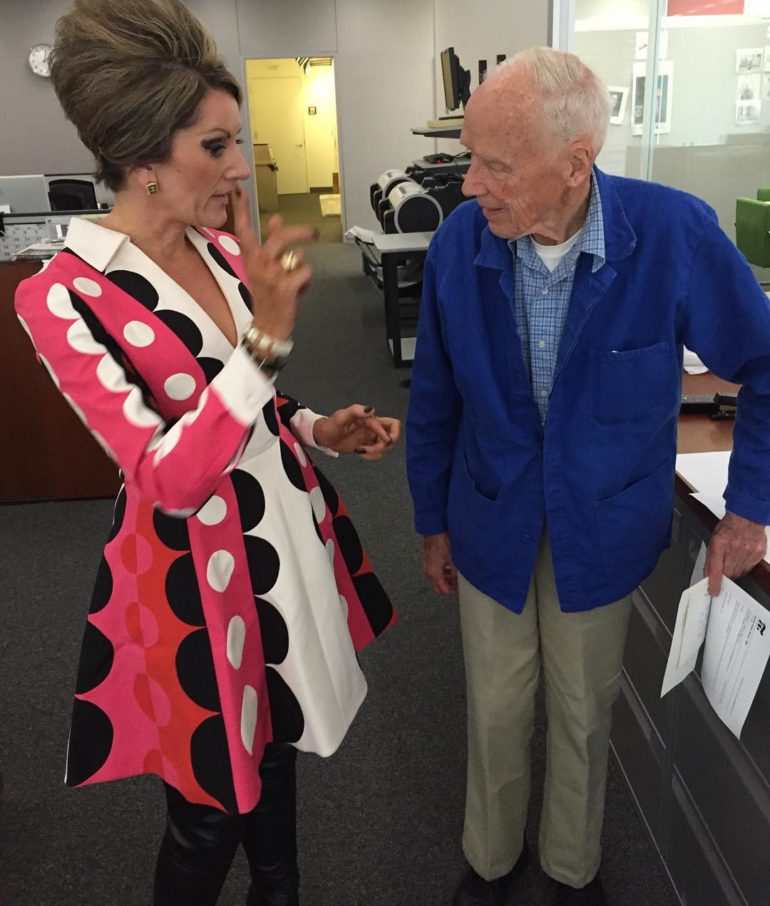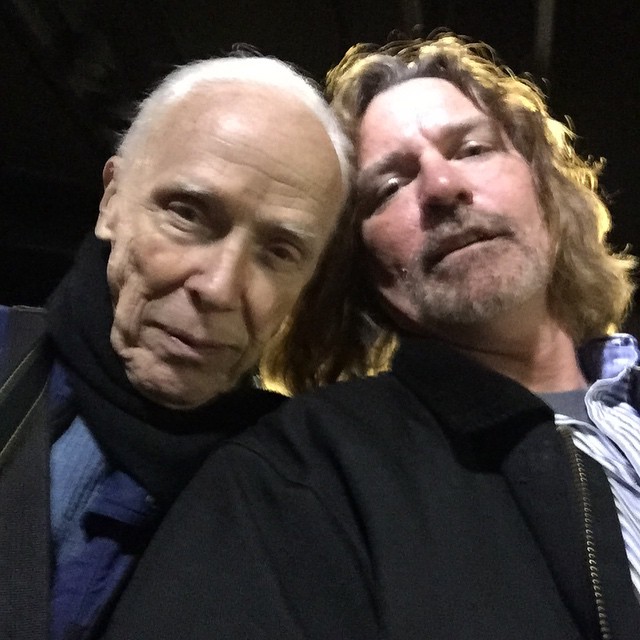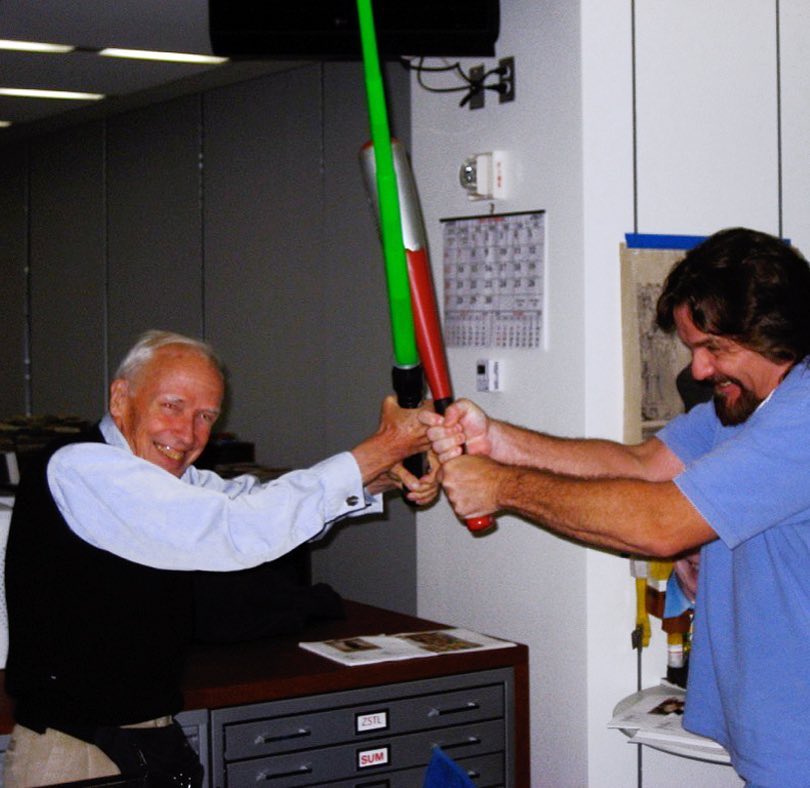All images from John Kurdewan’s Instagram. Used with permission.
Bill Cunningham is one of the most iconic figures in our industry. A fashion photographer for the New York Times, he was best known for taking candid images of America’s best-dressed people. As with most successful photographers, there’s always a team behind them. John Kurdewan was both Bill’s close friend and production assistant at the New York Times. For Bill’s famous feature ‘On The Street’, John was right there beside him helping to put it all together. Their friendship and professional relationship lasted for over 20 years, until Bill’s passing in 2016. “We never had a single argument,” says John.
So what was life like working so close to one of the greatest photographers of a generation?
In any creative setting, where minds come together and ideas are brought to life, it can sometimes be difficult to find the right chemistry between people. Bill and John never had that problem. It was their life experience and individual strengths that made them bond so well for such a long period of time. From John’s perspective, “Bill and I both came from similar backgrounds- simple, hardworking, blue-collar Catholic families.” he states. “That provided an immediate simpatico relationship. Bill viewed me as his facilitator to the digital world. He knew that without that bridge, his creative output would not reach its target.” He continued to state that Bill saw himself as a teacher of social and fashion history.
“So I guess in many ways, I functioned as his TA”.

Production assistants play such a pivotal role when supporting photographers. Because their work is often done incognito, in a public setting at least, their role is sometimes misunderstood. When asked about his day to day work, John’s responsibilities were to do everything necessary to allow Bill to do what he did best- which was reporting on both fashion and society, primarily through images, but also with supporting text. That meant making sure he had the necessary, manageable technology- his cameras- modified so that they could be as foolproof as possible to someone resistant to technology.
As most photographers do, John states that he found duct tape to be incredibly useful. However, so much of working for Bill was creating the proper environment in the office for him to deposit his images and assemble them into his iconic pages. John states that his needs were so simple:
“…we would just download, edit and arrange. In between, we’d eat, commiserate, the usual stuff. But Bill absolutely needed a gatekeeper. For someone who would not take anything from anybody, people were always asking Bill for things… his attention, his coverage. It was relentless and sometimes incredibly aggressive”.
A Photographer in a League of His Own

Few can compete with the levels Bill Cunningham was able to produce photography. For many, he is in a league of his own, unrivalled by those that followed the same path. For the viewer, it’s his images that do the talking. In John’s view, “Bill simply saw things others didn’t,” he continued, “he found beauty everywhere. But he was especially astute at finding the best way to reveal the uniqueness of the garment. It was always about the dress or the coat or the hat unless it was social reportage.” In truth, if Bill couldn’t find an unflattering angle, then he wouldn’t take the shot.
“”My responsibilities were to do everything necessary to allow Bill to do what he did best- which was reporting on both fashion and society, primarily through images, but also with supporting text. That meant making sure he had the necessary, manageable technology- his cameras- modified so that they could be as foolproof as possible to someone resistant to technology.”
Having spent so much time looking at beautiful images, we asked John if he ever had the urge to leave his desk and pick up the camera “No. I am not a photographer nor do I play one on TV.” John instead places his confidence in his abilities to design with photography.
“But I leave the picture taking to others”.
Bill’s Work Had a Home of Its Own

John had several projects that he had to work on at the New York Times. Like most professionals, his tasks were split into different folders on his hard drive. Bill’s work, however, was different. It did not live amongst the other projects, rather it had a home of its own. John had both a seperate hard drive and monitor for all of Bill’s work, but why? “It was for Bill’s peace of mind. His journalistic ethics were so strong, but he was also fiercely protective of his output and skittish at the same time. His greatest fear was that his photos would end up in the wrong hands for the wrong reasons”.
“I found duct tape to be incredibly useful. But honestly, so much of working for Bill was creating the proper environment in the office for him to deposit his images and assemble them into his iconic pages.”
As hardworking as the pair were, it wasn’t always straight faces and concern about deadlines. During the 20 years that they both knew each other, there was a lot of laughter. We asked John to share one of the more memorable funny moments with us… “It would have to be the time he was covering a very fancy evening event at the Frick Museum in the dead of winter. He locked his bicycle to a lamppost, as was his custom, only to return to find the lock frozen over. Let’s just say that he was incredibly resourceful in finding a steady stream of warm liquid to thaw out the lock!”.
The Man in The Blue Coat

Working alongside one of the greats for so long, you’re going to learn a thing or two. Aside from his patented look and warm personality, Bill was one of the hardest working photographers in the scene. On the topic of his work ethic and teachings, in John told us, ” Bill was singular in his pursuit and deeply ethical. He also respected all aspects of creativity, but especially the traditions of fine dressmaking. He knew what went into making a breathtakingly beautiful garment. I was able to absorb that appreciation from him”.
“Bill simply saw things others didn’t” he continued, “he found beauty everywhere. But he was especially astute at finding the best way to reveal the uniqueness of the garment.”
It was a sad day for everyone when Bill passed away on June 25th 2016. His fans and proteges will always remember him for his blue coat, amazing photographs, bicycle and camera. But for a person who was fortunate enough to call him a colleague and dear friend, John will remember Bill for, “His smile and his twinkling eyes. “.
John continues to share his memories of Bill on his Instagram – be sure you go and follow @workforbillc


